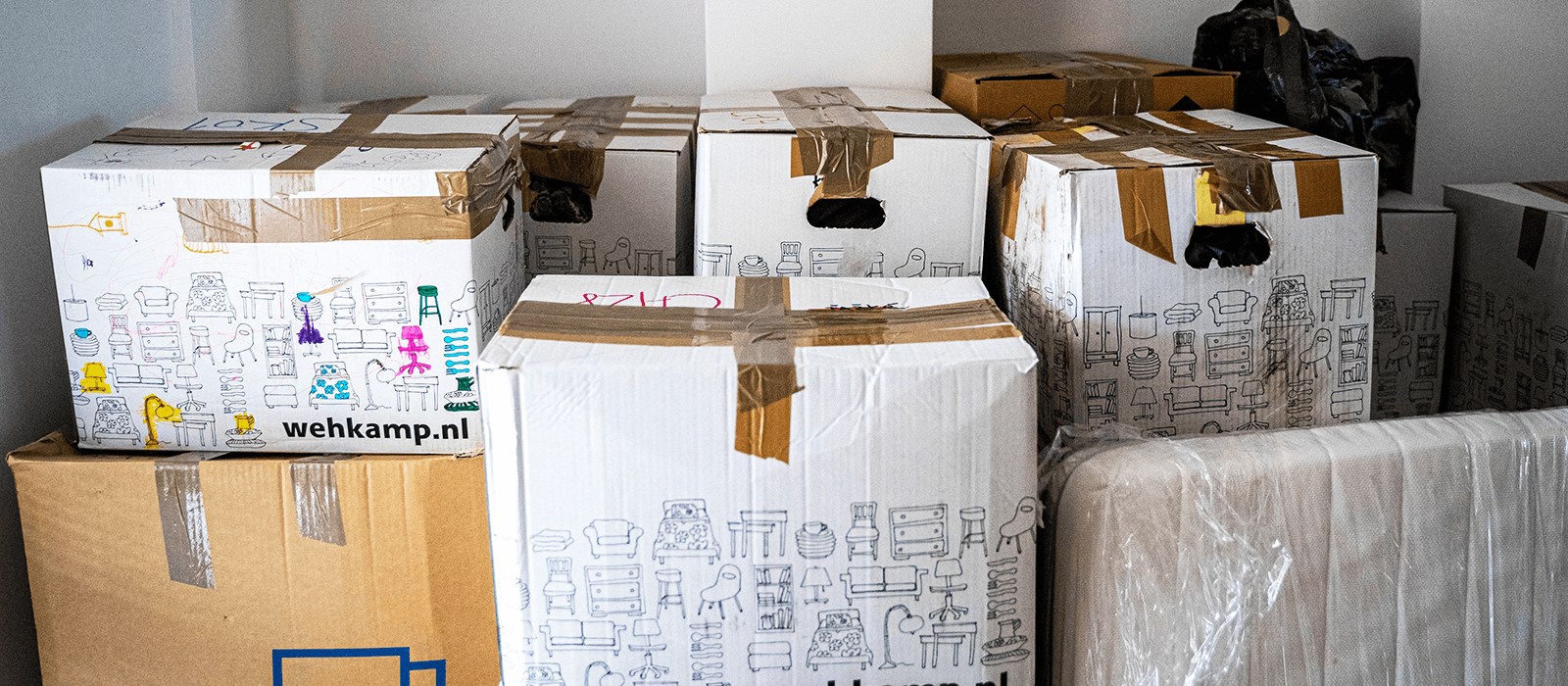
The True Cost of Poor Ecommerce Inventory Management
3 Ways to Improve Inventory Management and Get Ahead of Issues
Fortunately, inventory issues can be mitigated through new approaches and a variety of modern-day tools. Here are some key things to consider as you identify which area of your inventory strategy needs addressing.
1. Install a Barcode Inventory System
Human error is the main culprit for inaccurate cycle counts and data entry. Studies even show that a person will make at least one data-entry error every 250 keystrokes. And yet, many businesses that manage their own warehouses drag their feet when it comes to adopting a barcoding system because it seems like a big, tedious change.
Challenge yourself to look beyond this inconvenience. Remember that a barcoding system coupled with a reliable WMS can dramatically decrease errors, save your employees time and increase order accuracy. Many other functions of your business also rely on this data—forecasting, accounting and remaining in good standing with third-party marketplaces, to name a few. You won’t want to risk even greater consequences by moving slowly on getting a barcode system up and running.
2. Invest in Multichannel Ecommerce Software
It’s unrealistic to expect an employee or a piecemeal integration to keep up with the 24/7 nature of ecommerce. To avoid overselling, you need a software specifically designed for multichannel sellers that can update listed quantities in real time.
Zentail, for instance, has tried-and-true integrations into key sales channels, as well as the most popular 3PLs (including FBA), WMS solutions and inventory apps. It centralizes data from each system to intelligently route orders and sync inventory, whether an order is being processed, fulfilled or returned. You can further set inventory buffers, define reorder points or auto-notify a channel when inventory is on its way to remain in good standing with both your customers and marketplaces.
As an additional perk, multichannel software makes it easy to analyze data for patterns in buying behaviors. This can help to guide your purchasing decisions and to avoid stale inventory.

3. Evolve Beyond Traditional Forecasting
It’s not uncommon for sellers to default to a traditional 30, 60 or 90 day forecasting cycle. The problem is that it’s not well applied in ecommerce, where demand can shift suddenly and optimal reorder points can vary drastically depending on your product type, sales channel and marketing campaigns.
Ecommerce, no doubt, demands a much more flexible system. The best systems incorporate automation and machine learning that factor in lead times, holding costs, profit margins, sales velocity and other crucial data. It goes beyond historical information and uses real-time signals to suggest the best reorder points for your business and help you to decide if an item is even worth reordering.
By modernizing your approach to forecasting, you can improve your inventory turnover rate and free up more cash to invest into other areas of business.
The Bottom Line
If left unaddressed, inventory issues can severely erode profits and stunt business. Make sure to identify problem areas early on and set yourself up for long-term success with the right strategy, workflows and automation.
Read Also: How DNW Outdoors went from overselling once or twice a week to zero OOS
Despite carrying an annual price tag of $1.75 trillion, inventory issues have a unique ability to creep up on you. It might start with a few out-of-stocks here and there. Or a “rough patch” that was chalked up to a disruptive event that’s not likely to happen again.
Rarely, though, are issues like these isolated events. Normally, they’re just the tip of the iceberg—warning signs that there’s something deeper worth looking into lest you incur greater costs in the future.
In this blog we’ll cover off on the top causes of inventory management issues and estimate just how big of a problem they are today. We’ll also provide several tips for improving your inventory management strategy, including considerations for when you’re selling on multiple channels at one time.
Common Inventory Management Challenges
Overselling
Out-of-stock (OOS) orders are at the root of $634.1 billion in annual losses for retailers. This often stems from "phantom inventory"—inventory that is incorrectly listed as available at a storage location—or gaps in communication between channels that are selling the same product concurrently.
“What continues to surprise is the lack of progress some retailers have made in controlling that, while it may never be completely eliminated, can be successfully mitigated,” commented A.T. Kearney in a Supply Chain Dive article.
The consequence of stockouts tends to be somewhat downplayed. Aside from potential lost sales, OOS can erode margins in a variety of ways:
- Customers may lose trust in your brand after their orders are canceled and are unlikely to shop with your brand again
- Unhappy customers may leave negative seller feedback, which leads to lower placement in search results and lower conversions
- Phantom inventory or inaccurate counts will delay any automated reordering, exacerbating the problem
- Instead of proactively planning for sales and future inventory, you may start to sell reactively
- If you’re a multichannel seller, you’ll have the above issue on multiple channels, making your overall losses worse
- You’ll have to halt operations
Overstocking
On the other hand, overstocks are behind $471.9 billion in losses each year. In fact, another report estimates that U.S. retailers sit on $1.36 worth of product for every $1 in sales they make.
This could happen as you’re trying to overcorrect for OOS issues by either holding extra inventory and/or prematurely delisting inventory on certain channels to prevent overselling on one item. In another instance, your forecasting system may simply be inaccurate.
This figure, however, not only represents a loss of revenue from unsold products. It also speaks to the cost of having enough storage space for excess and incoming stock. Not to mention, if you're using a service like FBA, there are removal, long-term storage and disposal fees to account for.
“Holding costs can be especially deadly,” CEO of Zentail, Daniel Sugarman, once said. “They normally account for 30% or more of a seller’s working capital—which translates to tons of wasted cash that could’ve been spent on products that actually bring in revenue.”
The number of warehouses available to store retailer inventory has risen 6.8 percent over the last five years alone, and there were over 1,600 new warehouses built in the four-year time between 2013 and 2017. This dramatic increase in demand from storage can be an indicator of bloated inventory for many companies, with popular items competing for space with items that retailers just can't sell.
Spoilage and Dead Stock
Obvious issues can occur if certain inventory, like food or cosmetics, isn’t sold fast enough. Dead stock may also be related to seasonal items that can’t be resold the following season (for example, a banner that says “New Year’s 2021”).
Aside from taking up valuable storage space, these products are now purely costs unless you can find creative ways to offload them (such as product bundling, clearance sales or even selling it at a reduced price on marketplaces where there’s still a demand for your product).
Misplaced or “Gated” Inventory
Misplaced inventory is usually a result of disorganized warehouses, commingled inventory or an unreliable carrier. While in the latter instance, the problem may not be your doing, you’ll want to be able to get ahead of issues and anticipate customer concerns, since customers will associate any shipping issues with your business.
Similarly, “gated” inventory could become an issue that affects your sales and/or reputation. We’re using the word “gated” here to refer to stock that you might have with FBA or another third-party logistics provider (3PL). If you’re not selective about your partner or careful with how your inventory is distributed, you could run into issues trying to access or stay in control of your own products.
For example, thousands of FBA sellers faced a crisis in April 2020, when Amazon suddenly froze services for non-essential items. Their main channel for fulfillment and sales was depleted overnight, leaving them to somehow recover inventory that was now gated with Amazon. Often the only cure for this is to diversify beyond FBA and to work with a 3PL that has a proven track record.
Related: How to Offer Prime-Like Delivery Everywhere [Video]



.png)

